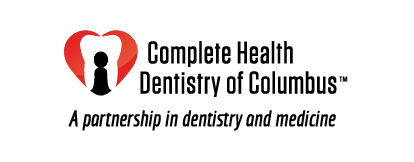Understanding Osteopenia and Osteoporosis: Prevention, Diagnosis, and Management
- Barbara McClatchie, DDS

- Aug 2, 2024
- 3 min read
Osteopenia and osteoporosis are two common conditions that significantly impact bone health, yet they differ in severity and implications. Let us start by defining the two:
Osteopenia: This condition signifies a reduction in bone mineral density (BMD) that is below normal levels but not yet at the critical stage seen in osteoporosis. It serves as a warning sign, indicating increased risk of developing osteoporosis.
Osteoporosis: Characterized by severe bone loss, osteoporosis leads to weakened bones that are highly susceptible to fractures, even with minor falls or injuries.
Risk Factors for Osteopenia and Osteoporosis
Understanding the risk factors is crucial for early identification and prevention:
Age: Bone density naturally decreases with age, making older adults more susceptible.
Gender: Women, especially after menopause due to reduced estrogen levels, are at higher risk.
Family History: A family history of osteoporosis or fractures increases the likelihood of developing these conditions.
Nutrition and Lifestyle: Low calcium intake, vitamin D deficiency, sedentary lifestyle, excessive alcohol consumption, and smoking are all risk factors.
Medical Conditions: Certain diseases and medications (e.g., glucocorticoids, thyroid medications) can affect bone health.
Low Body Weight: Individuals with lower body weight and lower BMI tend to experience higher rates of osteopenia and osteoporosis.
Insulin Resistance and Osteoporosis: An Unexpected Relationship
A recent review of the relationship between insulin resistance and parthenogenesis of postmenopausal osteoporosis digs into the intricate connection between the two conditions. The study explores how insulin resistance, a hallmark of conditions like metabolic syndrome and type 2 diabetes, can exacerbate bone loss, elucidating several underling mechanisms including compromised osteoblast function, heightened osteoclast activity, and disrupted hormonal balance. These insights underscore the importance of addressing insulin resistance as a potential therapeutic target to safeguard bone health, specifically in postmenopausal women.
Screening and Diagnosis
Early detection through screening is crucial for effective management. Screening guidelines dictate that the following individuals should be screened for bone loss:
Women aged 65 and older, regardless of additional risk factors.
Men aged 70 and older, regardless of additional risk factors.
Postmenopausal women under 65 and men aged 50-69 with additional risk factors such as low body weight, smoking, excessive alcohol use and use of certain medications such as glucocorticoids.
Individuals with a history of fractures or other risk factors
Screening intervals depend on initial findings and individual risk profiles, typically ranging from every 1 to every 10 years.
Dual-energy X-ray absorptiometry (DEXA) scan remains the gold standard for measuring BMD and diagnosing osteopenia or osteoporosis.
Prevention Strategies
Proactive steps can significantly reduce the risk of developing osteopenia and osteoporosis:
Weight-Bearing Exercise: Engage in activities that put stress on bones and muscles, such as walking, jogging, dancing and weightlifting. Aim for at least 30 minutes most days of the week.
Ensuring adequate Dietary Calcium Intake: Adequate calcium is vital for bone health: Sources include dairy products (milk, yogurt, cheese); leafy greens (kale, spinach): fortified foods (orange juice, cereals); and tofu.
Updated guidelines recommend:
Women aged 50-70: 1,000 mg/day
Women over 70 and men over 50: 1,200 mg/day
Calcium Supplementation: Consider supplements if dietary intake is inadequate, but always consult with your healthcare provider before starting supplementation.
Incorporating Weight-Bearing Exercises
Boost bone density and strength through regular weight-bearing exercises:
Vary activities to include walking, jogging, stair climbing, dancing and resistance training.
Incorporate new exercises gradually and maintain proper form to prevent injury.
For enhanced effectiveness, consider wearing a weighted vest. This adds resistance, intensifying your workout to promote bone density. Aim for about 4-8% of your total body weight in additional weight.
By adopting a proactive approach to bone health, you can mitigate the risk of osteopenia and osteoporosis. Lifestyle choices such as regular exercise, adequate calcium intake, and — when necessary — supplementation, along with regular screenings, are fundamental steps toward maintaining strong bones and reducing fracture risk.




Comments